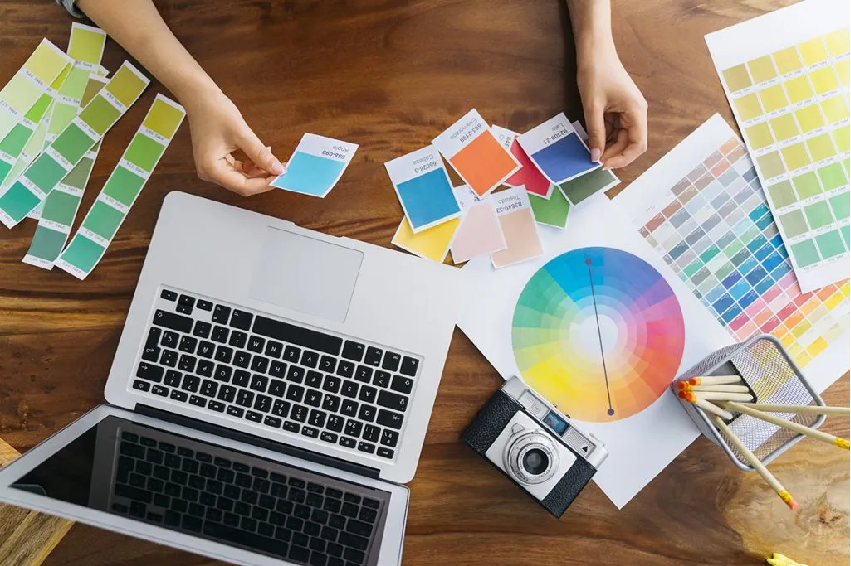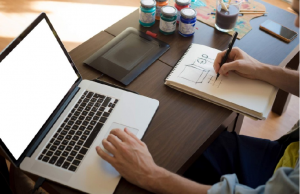
Best graphic design tips for beginners to improve
If you’re a beginner, chances are you’re looking for some high-impact graphic design tips to help you quickly improve your skills and understand the industry. Perhaps for years, you have not fully understood what a graphic designer does. Or maybe you haven’t realized that it’s a very wide field that ranges from the morning cup of coffee in your hand to the mobile app you use to monitor your sleeping habits and just about everything in between. You may also be interested to know what is persistent volume claim.
Designers create brands and experiences, ads and publications, physical spaces, digital spaces, animations, and a host of other things. Design directly affects our lives and has the potential to influence the world for the better. There has never been a more exciting time to study graphic design, whether online or in person.
Make a mood board

Create an inspiration board with designs that convey a similar look to what you would like to create in your design. This can include things like fonts, color palettes, images, or illustration styles, and more importantly, design references that address a similar design context.
By collecting a variety of references, you will begin to see similarities between them that will help spark your own creative ideas.
There is no set number, but you have to have enough references to have a variety of inspiration to draw from. If you only choose one, you run the risk of inadvertently copying it too much.
Browsing platforms like Pinterest are great for creating digital boards and finding inspiration, and algorithms will help you find similar styles, but be sure to check out the best design blogs to see what the industry leaders are creating. These great examples of graphic design are also a good starting point. You may also be interested in virtual event speakers for design tips for beginners to improve.
Have a plan
The worst way to design is to just go into a program and start “pixelating“.
Before touching the computer, it is important to think about the design goal, and what you want the viewer to see and take away. Start with a few quick sketches to plan out your page and where all the content will be placed, and keep the aforementioned idea board handy to keep you inspired.
Take a look at this sketchbook example from Shillington’s Sonny Cancio and remember that even the world’s most influential designers, like Lance Wyman, planned their designs on paper first. Spending a few minutes planning your design can save you hours on the computer and maybe a few headaches later on.
Simplify typography
One of the most important aspects of design is clarity, so it’s important not to sacrifice readability for visual appeal. When in doubt, keep it simple, and typography is the perfect place to start.
When starting out with a new design, it’s a good idea to experiment a bit and find the perfect font style for the particular project you’re working on.
Check out an inspirational blog like Type Wolf or Type in Use to see how other designers have chosen and applied fonts. Also, there are over 900 free fonts available on Google Fonts, so sometimes it’s not easy to choose one.
However, when it comes time to apply them, stick to combining two fonts in your design. Better yet, choose a single font family with a wide variety of weights and styles, so you can be sure that the fonts you pair will complement each other. For example, the Futura typeface family is not only available in a range of weights from light to extra black, but also has a variety of styles such as oblique and condensed.
Make sure the color is right
Color is one of the most impressive elements of design when it comes to communicating a certain tone or message.
Therefore, it is important to think about color psychology, as well as color theory, when choosing a palette. An easy starting point is to start with a color palette of 1-3 main colors that complement each other, then use different shades of the same color for consistency by adjusting relative brightness or saturation. This is important to get enough contrast in the palette. Think of each color as having a “loudness” and adjust the hues so they aren’t all screaming (or whispering) at the same volume.
It is also important to play with the proportions of the color palette and the amount of each color that is applied to the design. Remember that smaller types will need a stronger distinction against a colored background. Here are some great resources for creating color palettes:
- Pigment from Shape Factory
- Adobe Color
- Paletton
- Coolers
Don’t be afraid of white space
Integrating the space between the elements of your design is called “white” or “negative” space. White space can help achieve a certain look or feel in your design. It can give a feeling of cleanliness, minimalism, contemporary, and even fashion.
If what you want to convey is not necessarily cleanliness and minimalism, you should not rule out the impact of creating space. It can be tempting to fill in empty spaces in your design, but space can also be one of your biggest assets if used strategically and can help create a focal point.
Design space is not simply the absence of content, but a design option in itself and can be used to help achieve important design principles such as contrast and hierarchy.
Try to create space around an element that you want the viewer to focus on. For example, if it’s an important headline, keep it away from the rest of the text so the viewer knows to read it first.
This packaging design for the Little Wolf small coffee roaster uses plenty of space to help draw attention to its logo and the variant’s colored tab creates a contrast to the full artwork reverse. Speaking of…
Don’t play it safe
Contrast is undoubtedly one of the most effective design principles to keep in mind.
It can be achieved through the use of size and scale, relative lightness or darkness, color, and the use of space. Make sure the page elements are sized contrasting and the colors are contrasting tones or shades. You can play around with the size of the font on the page, and it can also be a useful rule of thumb to consider contrast when pairing your chosen fonts. Some designers adopt a “go big or go home” mentality in this realm and choose fonts to pair with that are very different from one another.
Pay attention to the hierarchy
When you sit down to design something, ask yourself “what is the most important element of my design? Put more simply, what is someone supposed to look at first?
Hierarchy is a very important aspect of graphic design. As a designer, your job is to guide the viewer through the design, so you need to prioritize elements based on their importance.
Luckily, the hierarchy goes hand in hand with contrast, and you can easily achieve that priority through scale, color application, type size, and font choices, as well as your use of spacing.
The most important message of the design should remain dominant, regardless of the style of the design or how many other elements it uses.
These posters for an annual organic wine festival in three cities are a great example of a strong hierarchy. On each poster, the city within the header text is clearly the most important piece of information, followed by the festival name and logo.
You may also be interested in 12 tips to improve the graphic design of your blog or web

Sorry, the comment form is closed at this time.